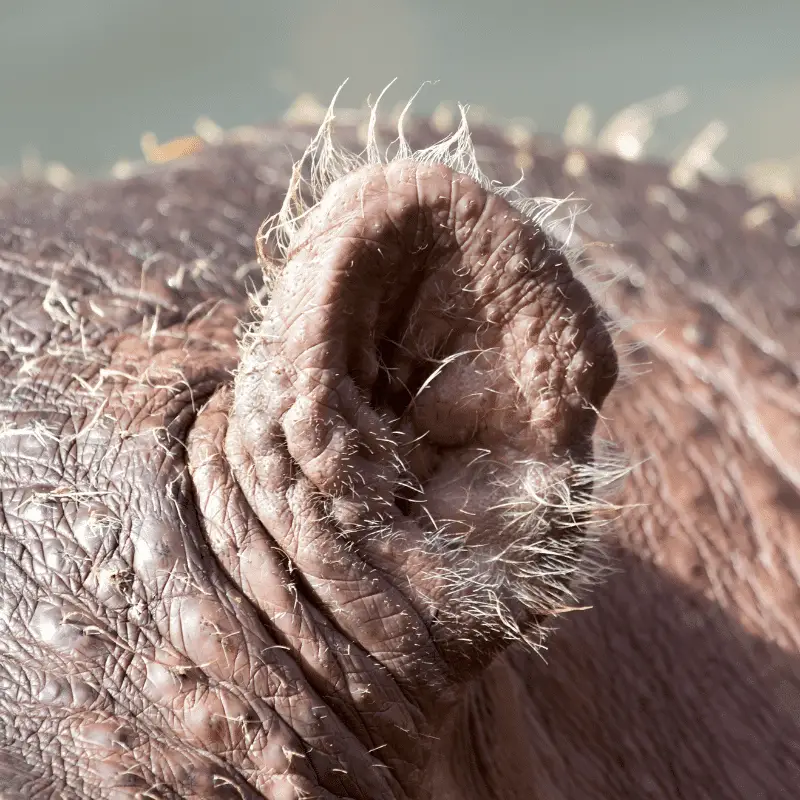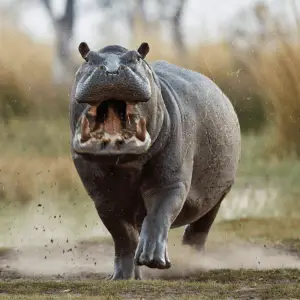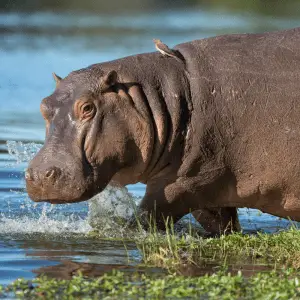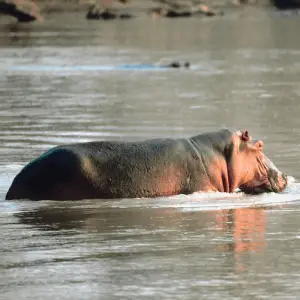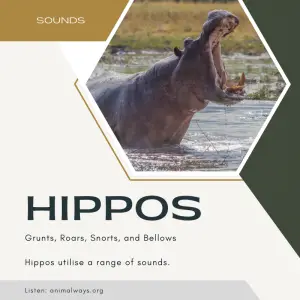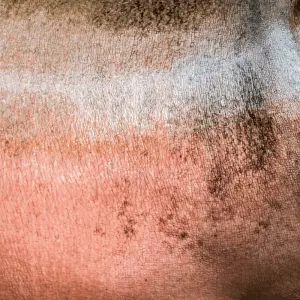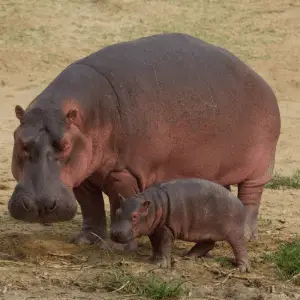The hippopotamus has small ears because they are a watertight adaptation. They can close their ears with the help of their ear lobes when they are underwater. These small ears also help them to avoid water-related infections.
We already know that hippopotamuses are semi-aquatic animals that spend most of their life in water. Having more prominent ears on their head would have ended the movement of these gigantic animals in the water. That may be why, over the period, the ears of the hippopotamuses have become smaller. Not only that, the ears of the hippopotamus are highly flexible.
Other Body Adaptations of a Hippopotamus
Sense Organs
Hippopotamuses spend most of their life in the water. That is what made these gigantic animals evolve, making it possible for them to maintain their lifestyle. Take the hippopotamus’s nostrils, eyes, and ears, for example.
If you notice the animal carefully, you will see that all these sense organs are located at the top of the head of a hippo. The unique position of these sense organs allows the animals to hear, see, and breathe above water while keeping the rest of their bulky body submerged underwater.
Also, the hippos have a unique membrane in their nostrils and eyes. Whenever a hippopotamus dips its head below the surface level of the water, it closes down its nostrils with this membrane.
Hippo’s eyes also get covered with a translucent membrane which helps these animals to see clearly under the water. The transparent membrane protects the eyes of the hippos from the water while maintaining the clarity of their vision.
Like their distant cousins, whales and dolphins, hippopotamuses can also create distinguishing sounds using their lower jawbones. These sounds they make under the water are so that they can communicate even when they are fully submerged underwater.
Unique Sweat
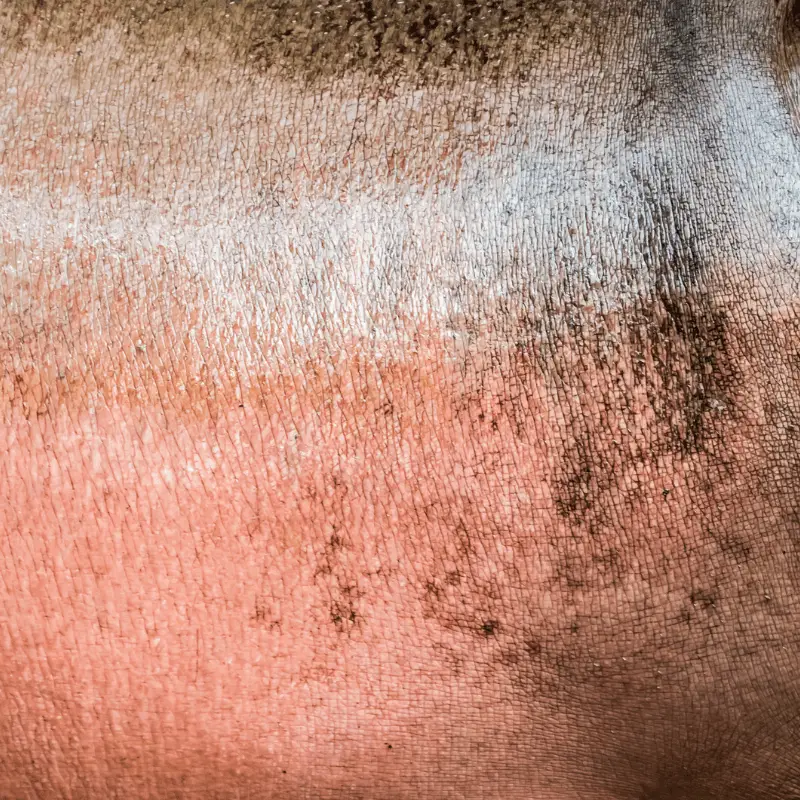
Unlike most mammals, hippos do not have any sweat glands on their bodies. That means hippos can’t maintain their body temperature through perspiration.
That does not mean hippos do not sweat. Instead, they have unique skin pores that secret a translucent substance that protects their skin from sun rays. Even though the colour is initially clear, it changes to red and brown once it comes into contact with the air.
That is why most people mistakenly assume that the hippos sweat blood. From this misconception, the name is often referred to as blood sweat.
The sweat contains antibiotic and natural sunscreen properties that help the hippos avoid infection. Not only that, but this substance also protects the hippopotamus’s skin, even though it comes in contact with chilled water quite often.
Unique Feet Structure
The hippopotamus belongs to the order Artiodactyla, or even-toed ungulates.
This order only consists of the animals with hoofed feet and an even number of toes.
Hippos have four toes. Each of these toes is connected with a thin membrane that helps these animals properly distribute their colossal weight.
The unique construction of the foot of the hippopotamuses allows them to retain their balance both when they walk on the dry land and in the river bottoms.
Teeth
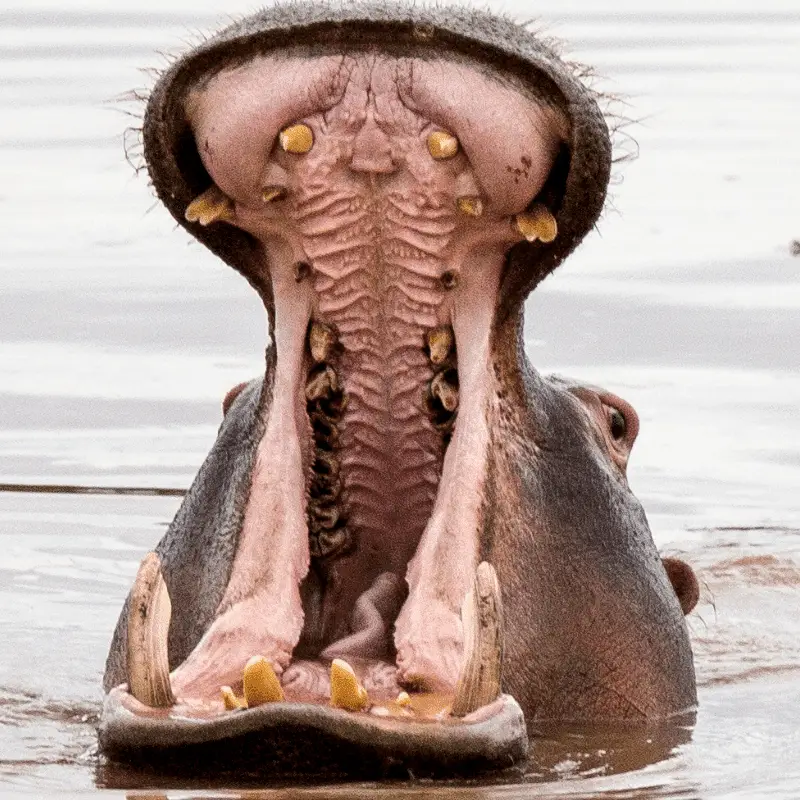
Everyone is aware of the sharp and prominent incisors and canine teeth that the hippos have. However, it may be surprising for people to know that hippos do not use these teeth for eating.
Hippos are essentially herbivorous and mostly graze on grass and other plant matter. That is why they only use these canines and incisors to showcase dominance over other males and to defend themselves against threats.
Not only that, hippos use these big and sharp teeth for fighting. Animals fight against each other to gain the favour of the females. It is the male hippopotamuses that mostly get involved in various fights.
The lower canine teeth of male animals can become 1.5 feet long easily. As the lower canine teeth come in contact with the upper canine teeth, it helps these animals to retain their size and sharpness. Compared to the male hippopotamuses, the canine and incisor teeth of the female ones are much shorter.
Feeding Adaptations
The hippopotamuses have broad mouths and thick lips. These facial structures of the hippos are perfectly developed for grazing on grass. The largely inactive lifestyle of the hippopotamus goes in tandem with their diet.
Even though these animals mainly depend on grasses and other plants, their daily consumption is significantly smaller than their size.
Recommended Read: Why Do Hippos Come Out Of The Water At Night?
Since the hippos do not spend much energy, they can go for a long time without eating. They can spend up to 18 hours a day in the water and feast only at night for around six hours. Unlike the Elephants, they graze almost all day up to 16 hours.
Another unique adaptation that the hippopotamuses have developed over the years is their storage system. The stomach of the hippopotamuses can store food. That is why if the hippopotamuses feel threatened in any way, it always chooses not to go out of the water to find food. A hippopotamus can live up to three weeks without consuming anything.
The tail of The Hippopotamus
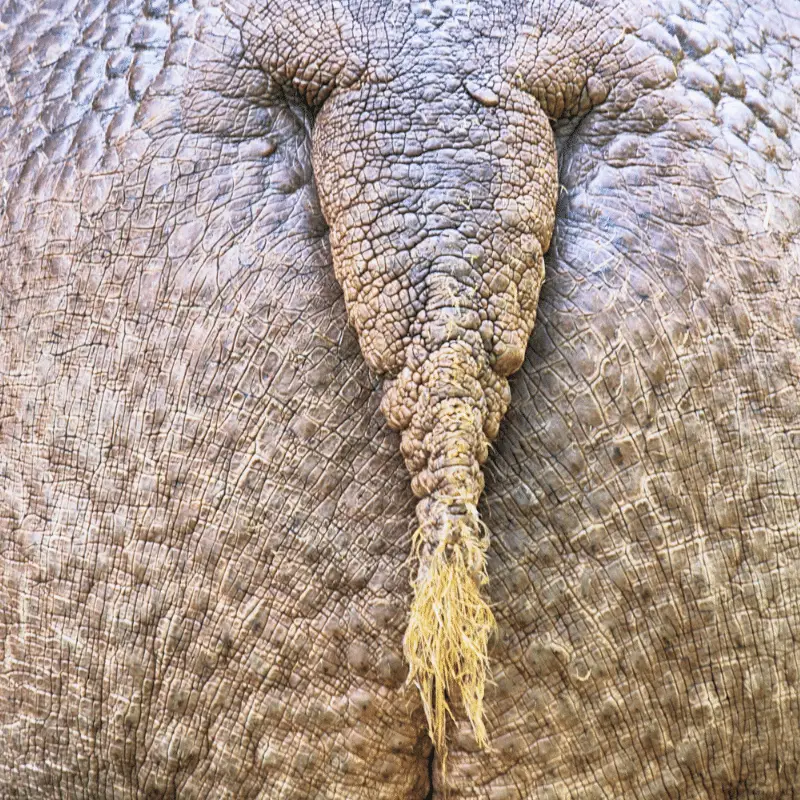
Even though people do not concentrate on the evolutionary changes of the tail of the hippopotamuses, it plays a significant role in their life. Hippopotamuses are highly territorial animals, marking their territory by flinging faeces and urine around. The tail of the hippopotamuses helps them do this and fling their excrement so easily. The paddle-like structure of these animals in this way proves to be one of the most important adaptations of the hippopotamuses.
Recommended Read

